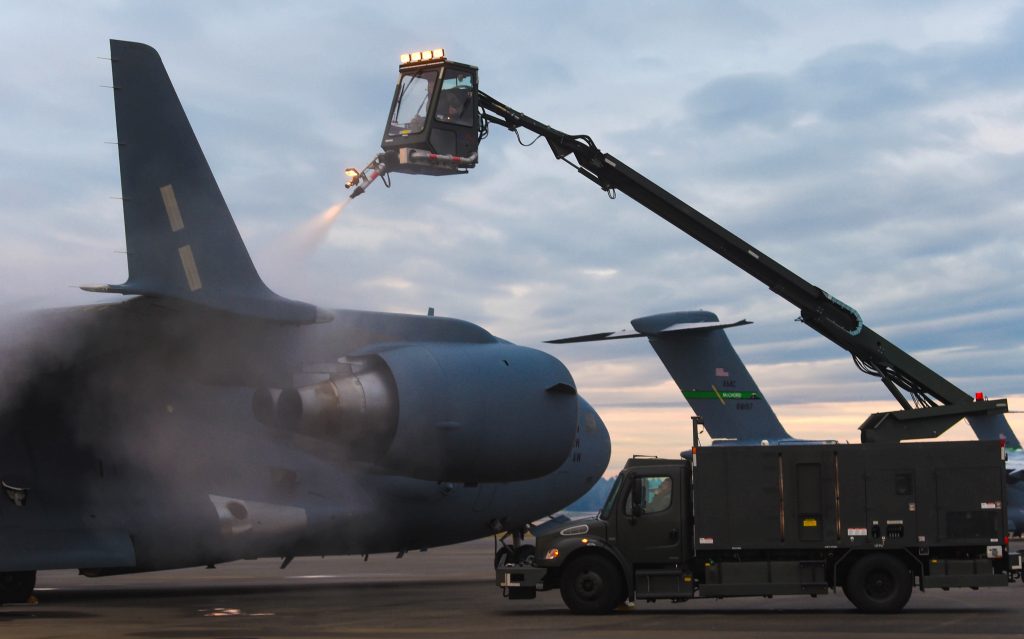Often containing miles of impervious runways, ubiquitous chemical demands for sanitation and safety purposes, and enormous fleets of vehicles with the potential to drip fuels, airports face unique stormwater management challenges.
According to a February 2020 report by the World Resources Institute (Washington, D.C.), climate experts expect these airport-specific challenges to grow during the coming decades as intensifying storm surges increasingly affect the low, flat land on which many major airports sit.
In recent months, several large airports have undertaken expansive, multimillion-dollar projects aimed at protecting local water quality and mitigating stormwater-flooding risks.
Safeguarding Grand Teton Biodiversity
Jackson Hole Airport, located in Teton County, Wyoming, is the only airport in the U.S. sited on the grounds of a national park.
According to the U.S. National Park Service (NPS), the many types of fish found in Grand Teton National Park waterways underpin an extensive food chain containing such endangered species as grizzly bears and bald eagles. If left unmanaged, stormwater runoff produced at Jackson Hole Airport could significantly threaten biodiversity and the health of local waterways, which NPS notes are a worldwide destination for trout fishing.
In September 2019, the airport completed work on an expansive stormwater filtration system. The system collects runoff from the rooftops of all airport buildings as well as all impervious surfaces, including runways. Designed to redirect enough runoff to mitigate flooding from a 100-year storm, the system separates such contaminants as motor oil and sediments from the runoff before discharging clean water back to Grand Teton waterways, according to a release from the airport.
At the system’s ribbon-cutting ceremony, Wyoming Governor Mark Gordon praised the airport for investing in local community resilience.
“It is exciting to have this airport, which is such a critical part of Wyoming’s economy, but also such a critically important part of Jackson Hole and its national parks, take a real leadership role in making sure they did the responsible thing going forward,” Gordon said. “May this lead the way in something that is going to be incredibly important for aviation in the future.”
De-icing Runways, But Not Waterways
According to the U.S. Environmental Protection Agency (EPA), most types of fluid that airports use to de-ice runways to ensure planes can take off safely present water quality risks in runoff. These risks include reductions in dissolved oxygen levels, groundwater contamination, and the deaths of fish and other aquatic life.

Cold temperatures at Edmonton International Airport in Alberta, Canada, force staff to apply de-icing fluid far more frequently than airports in warmer climates. Each year, the airport uses approximately 3.5 million L (925,000 gal) of fluid, according to the Edmonton Regional Airports Authority (ERRA) website.
To improve the facility’s capacity to manage de-icing fluid discharges, ERRA is implementing an innovative membrane-filtration technology at its existing stormwater ponds that currently pool runoff from across the property. The membranes feature a unique flow pattern that helps separate suspended solids, oils, and other contaminants from entering the stormwater ponds, International Airport Review reported in April 2020.
Airport staff expect the filtration system, which is designed for compactness and portability, to begin operations this year.
Using Runoff as a Resource
In Southern California, water managers increasingly view stormwater management as a route to help ensure local water security. As the region struggles with chronic drought, many coastal cities currently redirect urban runoff from streets straight into the Pacific Ocean.
Beneath the Long Beach Airport, however, this is not the case. Work recently concluded on a new system that collects runoff from the airport property as well as surrounding streets in Long Beach and Signal Hill. The system diverts the runoff away from the Los Cerritos Channel and into large, underground tanks equipped with hydrodynamic separators that strip away common contaminants. The system injects the treated water into the local groundwater aquifer for future reuse potential, according to project documents from the Los Angeles County Public Works Department.
The system offers a total storage capacity of approximately 33 acre-feet and serves a drainage area of about 780 ha (1,925 ac). After a lengthy construction process, the project came online in September 2019.
Taking Stock of Stormwater Management
Hosting more than 1,800 flights each day and almost 70 million passengers per year, the Dallas-Fort Worth International Airport maintains a massive property interspersed with 10 creeks that feed into eight different watersheds. Controlling stormwater discharges at the facility has long been a priority for the airport, which directly affects water quality in one of Texas’ largest metropolitan centers.
The airport already maintains an array of stormwater management infrastructure. According to a 2018 sustainability report, storm-drain inlets equipped with fuel-vapor traps that remediate oil and grease serve all airport terminal areas, runways, fueling areas, and cargo facilities. Staff also maintain an extensive collections system aimed at managing de-icing fluid along runways, outfitted with rain gauges and data-loggers to help optimize collection and treatment rates. At the southern end of the property sits a first-flush pretreatment system designed to eliminate contaminants before discharge into local creeks.
Before building new stormwater infrastructure, the airport is attempting to gain insight on how well its current infrastructure protects local water quality. Airport staff recently partnered with researchers from the University of Texas at Arlington (UTA) on an assessment program that will identify weaknesses in the current system and ways to address them.
According to a UTA release, the partnership expects to develop a broad, proactive approach to stormwater infrastructure deployment and maintenance, complete with a web-based flood warning system and an up-to-the-minute stormwater information dashboard, by October 2021.
ABOUT THE AUTHOR
Justin Jacques is editor of Stormwater Report and a staff member of the Water Environment Federation (WEF). In addition to writing for WEF’s online publications, he also contributes to Water Environment & Technology magazine. Contact him at jjacques@wef.org.














